#vernacular algorithms
Explore tagged Tumblr posts
Text
When the YouTube subtitle team have never heard of a hen do and accidentally Do a Racism
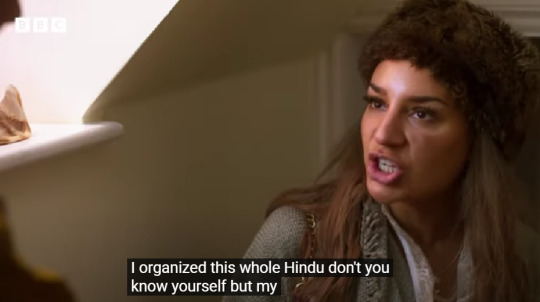
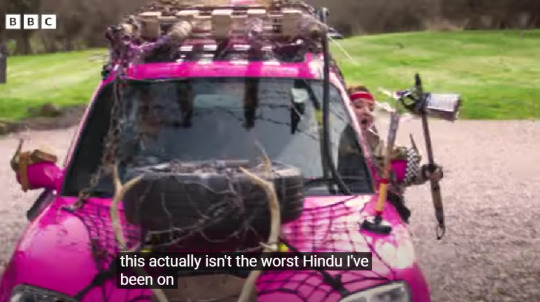
#henpocalypse#idk if it's going to be any good but it's got Danny Dyer surviving the end of the world so I'm on the fence#is there actually a youtube subtitle team or is it just poorly programmed algorithms who don't understand vernacular or accents
2 notes
·
View notes
Text
tell me how the fuck I ended up on matador thirst traps tiktok??? 💀💀
#algorithm is not algorithming#I suppose they were not the actual matadores bc they didn't have the red thingy#it was the pink and white one#but I don't know bullfight vernacular/terminology#me posts
1 note
·
View note
Text
VAPID VERNACULAR
I can’t remember the last time I saw an animal in the clouds.
Drained dry by your vapid vernacular,
uninspired by the static hum of shallow connections.
I search for new horizons, but the rot has spread—
minds hollowed, harbors closed.
Join the masses, abandon sovereignty,
or sit high in my tower, waiting for the tide to turn.
A shift—uncanny, unbearable—
from dull monotony to a paradox of terror,
horror, death, and transformation.
Will I survive? Will it be too late?
Will they erase my name from the algorithm?
Will I have time to find animals in the sky?
- Seth Arion
5 notes
·
View notes
Text
Integrating Chatbot AI with Your CRM: Benefits for Sales and Support Teams
Chatbots are among the fastest-growing ways of interacting with various customer service systems. People use the chat interface extensively as it is intuitive, fast, and can keep up with the higher demand for customer service. Chatbots and intelligent virtual assistants often help bring additional efficiency to customer service departments by answering questions in real-time and in several languages. The top chatbot platform in India facilitates the development of chatbots that can reply in vernacular languages as well without any delay.

Chatbot conversational AI
By learning what customers want to buy through chatbots during customer service, companies can upsell and cross-sell their products and services more efficiently. Overall, chatbot conversational AI can help enhance customer satisfaction and contentment, thereby improving a company's overall sales prospects. A great aspect of using a chatbot in customer support is that this tool does not have any such upper limit on capacity and, hence, can cater to a number of customers at once.
Chatbot services
Businesses are always looking for new and creative methods to improve user experiences and increase customer engagement in the fast-paced digital society we live in today. With the help of chatbot services, businesses can now automate interactions, offer real-time support, and create individualized client experiences. Here are some reasons why your company should use an AI-powered chatbot to revolutionize your efforts at client engagement.
Conversation with AI
Conversational AI combines natural language processing (NLP) with machine learning. These NLP processes flow into a constant feedback loop with machine learning processes to continuously improve the AI algorithms. Conversation with AI refers to technologies, such as chatbots or virtual agents, that users can talk to. They use large volumes of data, machine learning, and natural language processing to help imitate human interactions, recognize speech and text inputs, and translate their meanings across various languages.
3 notes
·
View notes
Text
How Tumblr’s Platform Vernacular Shapes Digital Activism and Micro-Publics
Tumblr isn’t just a relic of 2010s internet culture - It’s a living, breathing ecosystem where *platform vernacular* fuels niche communities and redefines digital activism. But how do Tumblr’s unique language and norms empower marginalized voices while navigating the paradoxes of the “public sphere”?

Micro-Publics and the Rise of Hashtag Vernacular
Habermas’s “public sphere” idealizes open, rational discourse, but Tumblr’s fragmented micro-publics - like LGBTQ+ blogs or fan communities - show how digital spaces operate differently (Simpson 2018). Here, hashtags like #BlackLivesMatter or #MeToo aren’t just metadata; they’re rallying cries that shape political discourse (Rho & Mazmanian 2020).
For instance, the #bodypositive movement on Tumblr challenges beauty norms through user-generated selfies and essays, fostering a community-driven counter-narrative to mainstream media (Reif, Miller & Taddicken 2022). These hashtags act as vernacular glue, binding users through shared slang (e.g., “OTP” or “AU”), GIFs, and reblogs - a far cry from Habermas’s text-heavy ideal.

Anonymity as a Double-Edged Sword
Tumblr’s lack of real-name policies creates safe spaces for marginalized groups, like LGBTQIA+ teens, to express themselves without fear of surveillance (Cavalcante 2018). Yet, this anonymity coexists with algorithmic biases. While Tumblr’s reverse-chronological feed *seems* democratic, studies show platforms like Twitter skew political discourse leftward, raising questions about whose voices get amplified (Huszár et al. 2021).

Platform Vernacular in Action: Memes and Fandom
Tumblr’s vernacular thrives on remix culture. Take TJLC (The Johnlock Conspiracy), a Sherlock fandom theory that spiralled into a meta-commentary on queer representation. To be more specific, the video of Sarah Z’s dissection of TJLC highlights how Tumblr’s “shitposting” and roleplay (RP) cultures blend humour with activism. Memes here aren’t just jokes - they’re resistance tools, as seen in political movements like #FreeHongKong, where absurdist humour critiques authoritarianism (Zheng & Li 2023).
youtube
Challenges: Surveillance and Algorithmic Gatekeeping
Despite its grassroots ethos, Tumblr isn’t immune to corporate or governmental surveillance. The Department of Homeland Security’s social media monitoring underscores how “safe spaces” can still be policed (Boyce 2016). Meanwhile, algorithmic curation risks homogenizing discourse - echoing Habermas’s fear of institutional influence.

Conclusion: Tumblr as a Vernacular Public Sphere?
Tumblr’s vernacular - reblogs, dashboards, and niche slang - creates a *participatory* public sphere where aesthetics and activism collide. Yet, its fragmented micro-publics remind us that the digital “public sphere” is plural, messy, and perpetually evolving. As platforms phase out hashtags, Tumblr’s survival hinges on balancing creativity with resistance to algorithmic control.
Reference:
Anselmo, DW 2018, ‘Gender and Queer Fan Labor on Tumblr’, Feminist Media Histories, vol. 4, University of California Press, no. 1, pp. 84–114.
Boyce, GA 2015, ‘The rugged border: Surveillance, policing and the dynamic materiality of the US/Mexico frontier’, Environment and Planning D Society and Space, vol. 34, SAGE Publishing, no. 2, pp. 245–262.
Cavalcante, A 2018, ‘Tumbling Into Queer Utopias and Vortexes: Experiences of LGBTQ Social Media Users on Tumblr’, Journal of Homosexuality, vol. 66, Taylor & Francis, no. 12, pp. 1715–1735.
Huszár, F, Ktena, SI, O’Brien, C, Belli, L, Schlaikjer, A & Hardt, M 2021, ‘Algorithmic amplification of politics on Twitter’, Proceedings of the National Academy of Sciences, vol. 119, no. 1.
Reif, A, Miller, I & Taddicken, M 2022, ‘“Love the Skin You‘re In”: An Analysis of Women’s Self-Presentation and User Reactions to Selfies Using the Tumblr Hashtag #bodypositive’, Mass Communication & Society, vol. 26, Taylor & Francis, no. 6, pp. 1038–1061.
Rho, EH & Mazmanian, M 2020, ‘Political Hashtags & the Lost Art of Democratic Discourse’, pp. 1–13, viewed 16 February 2025.
Simpson, E 2018, ‘Integrated & Alone’, pp. 237–240.
Zheng, Q & Li, M 2024, ‘Foreign Movies and TV Dramas as the Source of Political Argot in an Authoritarian Context: Memes and Creative Resistance in Chinese Social Media’, Critical Arts, Taylor & Francis, pp. 1–19.
#mda20009#PlatformVernacular#DigitalCommunities#HashtagActivism#PublicSphere#TumblrCulture#SocialMediaTheory#MicroPublics#DigitalCitizenship#Youtube
2 notes
·
View notes
Text
[3]Can Social Media Ever Be Truly Free?
“Hashtags such as #bodypositive are key sites of self-representation, but they also reveal persistent beauty hierarchies.” – Reif et al. (2022)
Social media has changed the way people engage with activism, giving marginalized groups a space to express themselves. Tumblr has been a key platform for movements like #BodyPositive, allowing users to challenge traditional beauty standards and promote self-love. However, as Reif et al. (2022) discuss, even within these movements, certain beauty norms persist, with white, conventionally attractive individuals receiving more visibility than others. This raises a crucial issue—while social media enables activism, it also reinforces existing power structures.
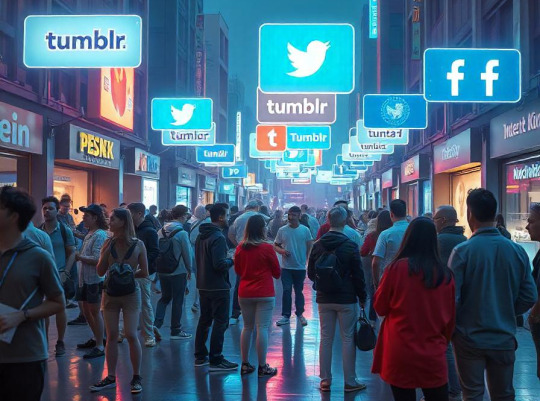
The Limitations of Social Media as a Public Sphere
The public sphere, as defined by Habermas, is meant to be a space where individuals can freely exchange ideas, shaping public opinion and democracy. In theory, social media offers this space, but in practice, it is shaped by corporate interests, algorithms, and moderation policies. Platforms like Tumblr do allow users to create micro-publics, where niche communities can thrive, but they still operate within corporate-controlled environments. Pilipets (2022) highlights how Tumblr’s 2018 NSFW ban disproportionately impacted feminist and LGBTQ+ communities, removing large portions of body-positive and queer content while failing to address other problematic material. This shows how corporate policies shape digital activism, often prioritizing advertiser-friendly content over authentic self-expression.

How Tumblr’s Platform Vernacular Shapes Activism
Tumblr’s reblogging culture and visual-based discourse make activism more accessible, allowing messages to spread quickly. However, Keller (2019) argues that this can also lead to performative activism, where engagement is passive rather than action-driven. Unlike platforms where users engage in real-time discussions, Tumblr’s activism often revolves around sharing aesthetically appealing content, which may dilute the complexity of social issues. Reif et al. (2022) found that while #BodyPositive posts aim to challenge beauty norms, they often still favor certain body types, particularly those considered “curvy but acceptable.” This highlights how platform structures influence activism, shaping which narratives gain traction.

The Role of Anonymity in Digital Activism
One of Tumblr’s most distinctive features is its anonymity, which allows users to engage without tying their activism to their real-world identities. This can be empowering, particularly for individuals in marginalized communities, who may not feel safe expressing themselves openly on platforms like Facebook. However, anonymity also has drawbacks. Pilipets (2022) notes that it can enable trolling, misinformation, and harassment, making it harder to maintain constructive activism. Additionally, anonymity can limit the effectiveness of activism beyond the digital space, as movements without identifiable leaders may struggle to organize real-world action.

The Influence of Algorithms on Online Activism
Algorithms determine what users see, shaping both perception and participation in online movements. On Tumblr, algorithmic moderation often mislabels body-positive images as explicit content, reinforcing biases in content visibility (Pilipets, 2022). Additionally, algorithms contribute to filter bubbles, where users are repeatedly exposed to similar content, limiting the diversity of perspectives (Keller, 2019). This impacts activism, as movements can become self-contained, reaching only those who already support them while failing to challenge wider societal norms.

References:
Keller, J. (2019). “Oh, She’s a Tumblr Feminist”: Exploring the Platform Vernacular of Girls’ Social Media Feminisms. Social Media + Society, 5(3).
Pilipets, E. (2022). Nipples, Memes, and Algorithmic Failure: NSFW Critique of Tumblr Censorship. New Media & Society, 24(6), 1459–1480.
Reif, A., Miller, I., & Taddicken, M. (2022). Love the Skin You’re In: An Analysis of Women’s Self-Presentation and User Reactions to Selfies Using the Tumblr Hashtag #bodypositive. Mass Communication & Society.
2 notes
·
View notes
Text
From Hashtag to Revolution: Tumblr and the Feminist Struggle
In the digital age, social media has become an important space for feminist discourse, where hashtag-based movements thrive. According to Habermas’s theory of public space (cited in Kruse, Norris & Flinchum 2018, pp. 62-63), an ideal public space should ensure access to information, equal participation, and freedom from institutional domination. In this context, Tumblr has emerged as a unique platform where feminist communities can connect, share, and raise awareness about gender equality. So is Tumblr an ideal public space for feminists?

Tumblr and the Digital Public Sphere
Founded in 2007, Tumblr is different from other social media platforms due to its anonymity, robust hashtag system, and reblog mechanism. This creates an open space where users can discuss sensitive issues without fear of censorship or harassment. According to Kruse et al. (2018), a true public sphere must meet three criteria:
1. Unrestricted access to information - On Tumblr, users can find a wide range of political, gender, and feminist material and discussions without being constrained by algorithms like on Facebook or Instagram.
2. Equal participation - Unlike Twitter, where posts are easily hijacked, Tumblr allows users to control what appears on their personal pages.
3. Reduced institutional control - Tumblr is less controlled by corporations or governments than other platforms.
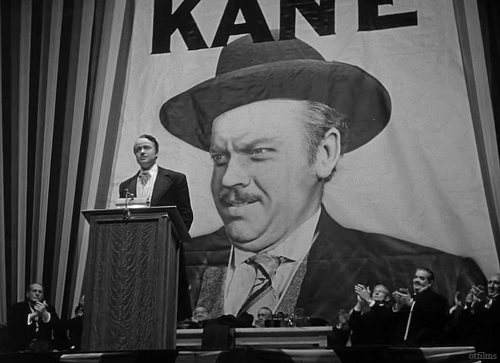
Feminism on Tumblr
Tumblr is considered the center of the digital feminist movement. Keller (2019) claimed that “Feminism on Tumblr” describes how feminist groups on the platform use social media to fight for women’s rights, share personal experiences, and create spaces for mutual support. Hashtags like #Feminism, #MeToo, and #BodyPositive have attracted millions of posts, raising awareness about gender inequality. On Tumblr, users are free to express their feminist views in creative and powerful ways. The platform is not limited to traditional forms of feminism, but also opens up space to explore new, even revolutionary approaches, allowing people to share and express their identities.
In addition, Tumblr has played a significant role in spreading discussions about LGBTQ+ rights, gender-based violence, and societal beauty standards. According to Solomon & Kurtz-Costes (2017), as social media platforms represent hubs of community for transgender adolescents, these communities provide emotional, appraisal, and informational support that transgender youth may not otherwise be able to access. In particular, the platform has become an important space for trans women, where they can find empathy, and support, and share their experiences in their journey to self-actualization. Thanks to Tumblr’s anonymity and unique language culture, many trans women have found a community where they can be their true selves, fight for their rights, and express their identities without fear of judgment or discrimination.

Despite the presence of other social media platforms, Tumblr stands out as an important space for building and promoting feminist movements. With its anonymity and unique language culture, Tumblr continues to be a place where communities can connect, share, and express their identities freely and powerfully. Tumblr’s future in this role will depend on how the platform adapts and evolves in the rapidly changing digital landscape.
What do you think about Tumblr’s ability to continue to be an important space for social movements? Share your thoughts! 🚀
References
Keller, J. (2019). “Oh, She’s a Tumblr Feminist”: Exploring the Platform Vernacular of Girls’ Social Media Feminisms. Social Media + Society, 5(3), 1–11. https://doi.org/10.1177/2056305119867442
Kruse, L. M., Norris, D. R., & Flinchum, J. R. (2018). Social Media as a Public Sphere? Politics on Social Media. The Sociological Quarterly, 59(1), 62–84. https://doi.org/10.1080/00380253.2017.1383143
Solomon, H. E., & Kurtz-Costes, B. (2017). Media’s Influence on Perceptions of Trans Women. Sexuality Research and Social Policy, 15(1), 34–47. https://doi.org/10.1007/s13178-017-0280-2
2 notes
·
View notes
Note
Hey do you have any poetry you can suggest because I saw your response to that OP, I’d love some stuff to read!
so i started responding to another similar ask by @unitedstates0fdakota but i accidentally posted it when it was incomplete so i decided to continue here! check out that post for the first two recs, george abraham's birthright and romeo oriogun's sacrament of bodies
more than organs, kay ulanday barrett
kay ulanday barrett is a poet, performer, and educator, navigating life as a disabled filipinx-amerikan transgnder queer in the u.s. with struggle, resistance, and laughter. pamela sneed, one of the reviewers quoted on the back of more than organs, describes the collection as about “hunger that is physical, spiritual, and queer”, and i think hunger is an excellent way to put it. i love how the pieces in this collection oscillate between visceral and playful – there’s a poem called “pain, an epistle” but also one called “actually, jenny schecter wasn’t the worst”.
you googled “authentic” / & now are seated next to me. / as I speed walk you to the cart / aunty gives me the last dish / gets the idea that I’ve waited too long / for something to just taste right. / I wish for a dumpling stuff / of bullet skins to be the shrapnel / in every white man’s throat. / go ahead / say the word oriental / at my table / one more time. — “I just want dimsum undisturbed by wypipo”
a theory of birds, zaina alsous
zaina alsous is a prison abolitionist, a daughter of the palestinian diaspora, and a movement worker in south florida. the blurb for a theory of birds describes it as “putting ecological conservation in conversation with arab racial formation, state vernacular with the chatter of birds”, and as someone who wanted to be an ornithologist as a child and now works in climate policy, it feels like she wrote this to speak to my soul.
Inside the dodo bird is a forest, Inside the forest a peach analog, Inside the peach analog a woman, Inside the woman a lake of funerals, disappointed male lovers, scientists, Inside the lake a volcano of whale songs, Inside the volcano a language of naming, Inside the language an algorithm for de-extinction, Inside the algorithm blued dynamite to dissolve the colony’s Sun, twinkle twinkle, I didn’t mean to fall in love with failure, its molting rapture, I didn’t mean to name myself from a necklace of silent vowels, I didn’t go looking from for the bird, I entered through the empty cage, hips first — “Bird Prelude”
boy with thorn, rickey laurentiis
rickey laurentiis is a poet who was raised in new orleans, louisiana, to study light. this is true for a lot of poetry imo, but every piece in boy with thorn requires reading at least twice in a row, because laurentiis’s use of language is so deft and stuffed with meaning that i needed to experience it from different angles. the description for the collection tells us “in a landscape at once the brutal american south as it is the brutal mind, boy with thorn interrogates the genesis of all poetic creation—the imagination itself, questioning what role it plays in both our fascinations with and repulsion from a national history of racial and sexual violence”.
Therefore, my head was kingless. I was a head alone, moaning in a wet black field. I was like any of those deserter slaves whose graves are just the pikes raised for their heads, reshackled, blue and plain as fear. All night I whistled at a sky that mocked me, that fluently changed its grammar as if to match desire in my eye. My freedom is possible, it said. — “Conditions for a Southern Gothic”
eye level, jenny xie
this is kind of cheating because i first read eye level when it came out in 2017, but i recently reread it so i feel like it counts! jenny xie was born in anhui province, china, and now lives in the united states. eye level travels with xie from phnom penh to corfu to hanoi to new york city, and her descriptions piercing, sensual, and bottomless.
Sunday, awake with this headache. I pull apart the evening with a fork. White clot behind the eyes. Someone once told me, before and after is just another false binary. The warmed-over bones of January. I had no passport. Beneath the stove, two mice made a paradise out of a button of peanut butter. Suffering operates by its own logic. Its gropics and reversals. Ample, in ways that are exquisite. And how it leaves —not unlike how it arrives, without clear notice. — “Zuihitsu”
i also post about english-language palestinian poetry (both written in english and in translation) in my #palestinian poets series, each of which features poems you can find online!
7 notes
·
View notes
Text
[WEEK 3] Unveiling the Digital Feminist Playground: How Tumblr's Vibe Compares to Twitter and Facebook
Remember when MySpace was the OG place to blast embarrassing angsty music and upload blurry webcam pics? Ah, simpler times. Now, teens (both actual and honorary) are slaying the social media game across multiple platforms, each with its unique vibe and "rules of engagement." Today, let's dive into the fascinating world of Tumblr, a digital haven for all things creative, weird, and wonderfully niche. But how does it stack up against Twitter and Facebook? Buckle up, internet explorers, because it's time to unpack some platform vernacular!
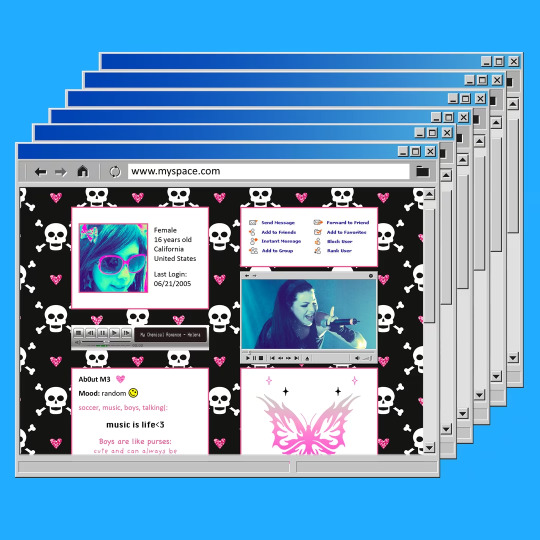
First up, Twitter: Imagine a high-pressure debate club where everyone has 280 characters to drop their hottest takes (Keller 2019). That's Twitter, a platform for news, memes, and lightning-fast arguments. Want to spark a feminist hashtag movement? Twitter's your jam. Remember how the #MeToo movement gained widespread attention and support on Twitter with the hashtag being used more than 19 million times on an average of 55,319 uses per day, with survivors and activists using the platform to share their stories and advocate for change (Toor & Anderson 2018)? That’s how it works. Just keep in mind, that brevity is key, and don't get caught in the comment section crossfire.

Next, we have Facebook: the OG social network, now the chill family picnic where everyone from your grandma to your third cousin shares everything from baby announcements to political rants. It's a platform for staying connected with loved ones, sharing life updates, and joining groups with like-minded folks. However, Facebook is like an open house where your connections (or ‘friends’) are freely invited, including parents, siblings, other relatives, and school peers, who are people with whom you have social connections outside of the platform. Indeed, this is a key part of Facebook’s platform vernacular; anonymity is designed out of Facebook, and one is required to present an “authentic self” via a “real” first and last name when creating a Facebook profile (Bivens 2015). Thus, for the most part, teens were selective in what they chose to post on Facebook, carefully considering their “imagined audience” (Marwick & boyd 2011) and the types of reactions they’d receive from their “friends.”

So, where does Tumblr fit in? Imagine a vibrant marketplace where artists, writers, and meme lords showcase their passions, share fandoms, and build communities around shared interests. Think GIFs galore, long-form blog posts, and niche groups for everything from obscure historical fiction to cat cosplay. Tumblr's strength lies in its anonymity and freedom of expression (Collins 2022). It's a haven for anyone who wants to be weird, creative, and unapologetically themselves without the curated pressure of Insta or the algorithm-fueled firestorm of Twitter.
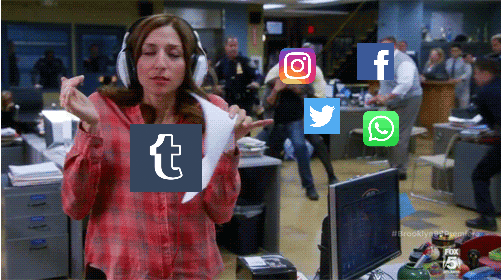
Here's a handy infographic to break it down:
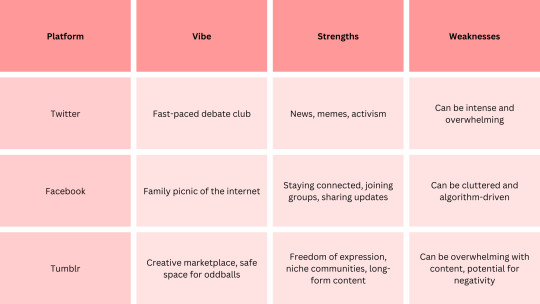
But what about the feminist factor you ask? All platforms have their strengths and limitations. Twitter's speed and reach make it ideal for amplifying social justice movements. Facebook groups foster community and offer valuable resources for feminist activism. However, Tumblr's unique blend of anonymity, creative freedom, and long-form writing allows for deeper exploration of feminist issues, fostering discussion and building supportive communities around shared experiences.
Ultimately, the best platform for you depends on your personality and goals. Want to spark a discussion about gender equality? Hit Twitter. Want to share your art and connect with fellow feminists? Tumblr's your friend. Just remember, every platform has its quirks and challenges. Be mindful of the platform vernacular, navigate respectfully, and stay true to your voice. Don't be afraid to be a digital nomad, hopping between platforms to explore different communities and express yourself in diverse ways. After all, the internet is your oyster, and your feminist voice deserves to be heard loud and proud, no matter where you choose to share it!

Remember, the key is to be:
Savvy: Understand the strengths and limitations of each platform.
Strategic: Choose the platform that best suits your goals and needs.
Respectful: Navigate each community with a kind and inclusive mindset.
Confident: Don't be afraid to express your voice and engage with others.
References
Bivens, R 2015, ‘The gender binary will not be deprogrammed: Ten years of coding gender on Facebook’, New Media & Society, vol. 19, no. 6, pp. 880–898.
Collins, L 2022, ‘How Tumblr went from a $1 billion Yahoo payday to a $3 million fire sale’, CNBC, viewed <https://www.cnbc.com/2022/09/15/how-tumblr-went-from-1-billion-yahoo-payday-to-3-million-fire-sale.html>.
Keller, J 2019, ‘“Oh, She’s a Tumblr Feminist”: Exploring the Platform Vernacular of Girls’ Social Media Feminisms’, Social Media + Society, vol. 5, no. 3, pp. 1–11.
Marwick, AE & Boyd, D 2011, ‘I Tweet honestly, I Tweet passionately: Twitter users, Context collapse, and the Imagined Audience’, New Media & Society, vol. 13, no. 1, pp. 114–133, viewed <https://journals.sagepub.com/doi/10.1177/1461444810365313>.
Toor, S & Anderson, M 2018, ‘How Social Media Users Have Discussed Sexual Harassment since #MeToo Went Viral’, Pew Research Center, viewed <https://www.pewresearch.org/short-reads/2018/10/11/how-social-media-users-have-discussed-sexual-harassment-since-metoo-went-viral/>.
2 notes
·
View notes
Note
In response to your questions about the timelapse videos, here are my two cents. Engagement doesn’t usually give you anything on tumblr other than a bump of serotonin, but it can lead to commissions or sales if you provide an easy link and are chill about it. But people are touchy about the word “engagement.” They want to feel like a community or maybe a cultural salon, rather than part of an extractive media process.
Your most successful process videos are going to show a satisfying finished piece at the end and give people time to look at it and go “wow.” So for most art some editing will be necessary to get there in a short video.
Another thing I should bring up is that the music you used for that sketch video was pretty grating. If you’re going to use music, i’d suggest finding something more relaxing. Just because the video is sped up doesn’t mean the sound has to be frantic.
Your painting process is so interesting, and your art is great! People here love cats with all their hearts and mostly really enjoy art. I wish you all the best!
Hi anon, thank you so much for your input! I really appreciate it, and I'm still getting used to actually getting responses, after trying to get it noticed for 10+ years (this isn't my first tumblr blog).
There's a lot going on with trying to share my art in the current internet ecosystem, probably something a lot of artists are dealing with. I'll try my best to describe what's going on on my end.
I don't like the term engagement either. I am trying to share my art through four main platforms at this time: Instagram, Tiktok, YouTube, and of course our precious hellsite: Tumblr. So my use of the term is more from the vernacular being used on other platforms, with what seems to be a kind of agreed upon use by artists of "this is what we have to deal with, so might as well lean into it." Maybe I'm mis-interpreting that (not surprising).
So far, Instagram is where I get my art noticed the most and has lead to the most sales/commissions/financial support. I think this has to do with the cat community that has formed over there. Tumblr definitely has its cat lovers, but I think a lot of them are over on IG so that they can follow internet cat celebrities and the like (I'm one of them!). So things like engagement and trends will dictate how I share my art with at least algorithm-led platforms. Also all of the cat people and friends I've met at shows regularly have Instagrams, not that that's a reason to be on there.
I agree that I should add time of the video at the end to show the piece to give it time to be seen. This can be easily accomplished if I make sure to take a photo of the art and include it in the video. I haven't had the best record of doing this due to my own ADHD and the pace at which these sketch paintings are being made.
Most of these recent sketch paintings were made back in August during CatCon on the spot! It's a crazy thing to do and I haven't seen anyone else do something quite what I'm doing, which is I guess part of my marketing for conventions and shows. So, sometimes I forget to take a picture at the end, but I'm getting better at including it in my process. And yes I call them sketches because they're fairly quick (I aim for 30 minutes for a 6"x6") and I don't get to add all the details I would like to if time was available. (I'm currently working on a new 3"x3" fully detailed piece of a famous internet cat, I've spent an hour and a half on it, and it's not done yet!)
Part of the timelapse question is not just to see what people prefer to determine how much time I should put into editing, but also how much effort I should put into digital storage. I have a couple different ways of recording footage, and the main way I've been doing so is with my iPhone. And so when I'm at events that I fly to, like CatCon, sometimes I'm having to transfer videos from my phone to an SD card until I can get home and get the footage onto a larger storage device. This can be tricky especially if I don't make sure to clear my phone storage before going to an event (something I'm adding to my list!) However, if I use the timelapse feature already available on the iPhone, then that makes editing and storage even easier for me later. I used this a lot with my Black Cat October series. But this timelapse footage doesn't look as good (maybe) and I don't have the option to do other edits later. Which then comes to the question for myself, am I really going to go back and make another edit for these sketch paintings? Perhaps the answer is timelapses for sketches, and full videos for fully detailed paintings.
And thank you for your input on the music part! The reason for the music in the last video was because of what's trending right now. Sometimes IG will save a copy of the video I posted with whatever music, so I had reused it in today's post. I think I'll make sure to use something more soothing/calming going forward just for tumblr, because you all have a special place in my heart.
Usually I'll open TikTok and do a separate video save to have a hi-res copy with music, but since I had recently created a shop on TT I only have commercially available music. Maybe I should take the shop down anyways, I'm really not sure if it'll help my art get notice or sell more stickers. I'd rather manage sales from my website anyways, but I feel like I should at least give it a try. You're welcome to tell me your thoughts on that!
I could go more into detail about my process for just uploading videos, but I feel like this is already getting TLDR. So feel free to let me know if you want me to ramble some more! I'd love to get input on that, as well as get an idea of what other artists are doing since I have no idea what I'm doing!
3 notes
·
View notes
Text
Extrapolation of the potential effects of generative AI based on the effects of the invention of the printing press
Here are some of the major historical events closely related to the invention of the printing press:
Gutenberg Bible (1455): Considered the earliest surviving book printed with movable metal type in Europe. This was Johannes Gutenberg's magnum opus and demonstrated the viability of printing. It helped spread the printing press technology across Europe rapidly.
Spread of Humanism (15th century): The rise of humanism emphasized classical learning and education of the population. This created demand for books which fueled the growth of printing. Works of scholars like Erasmus were widely printed and disseminated.
Protestant Reformation (16th century): Martin Luther effectively used the printing press to mass produce and distribute his 95 Theses and other writings criticizing the Catholic church. This helped spark the Protestant Reformation movement by disseminating ideas to a wider audience.
Decline of scriptoria (15th century): As the printing press became dominant, it replaced handwritten manuscript production in scriptoria attached to monasteries. This was a major cultural shift from manuscript to print culture.
Vernacular literature (15th-16th century): The printing press enabled literature to be published in local languages rather than just Latin, making it accessible to the general populace and helping establish national identities and cultures.
Scientific revolution (16th-17th century): New scientific ideas could be widely shared through printing, accelerating processes of data collection, experimentation and debate. This was instrumental to the scientific revolution.
In summary, the printing press was a key driver of the dissemination of ideas during major social, religious and intellectual changes in the early modern period in Europe. It helped enable the spread of humanism, Reformation, rise of vernacular languages and acceleration of scientific progress.
Here is an extrapolation of the potential effects of generative AI based on the effects of the invention of the printing press:
Democratization of content creation: Generative AI tools may allow more people to easily generate all kinds of creative works like images, videos, writing, music etc. This could mirror how printing expanded authorship.
Accelerated spread of ideas: AI-generated content could propagate new concepts rapidly online, just as printing disseminated humanist texts and revolutionary writings more broadly.
Shift from scarcity to abundance: Generating AI may replace scarce, costly manual production with abundant, cheap automated creation like printing replaced hand-copied manuscripts. This could impact creative industries.
Empowerment of grassroots movements: Citizen-led causes may leverage AI tools to amplify messages through generated visuals/narratives online, paralleling how printing aided reformers like Luther.
Rise of AI-generated literature: Entire books, stories, poems could be algorithmically written, analogous to printed vernacular texts establishing new cultural forms.
Democratization of knowledge: Open-source generative models may make specialized expertise like science/medicine/law more accessible to all through synthesized content.
Accelerated scientific progress: AI models generate hypothesis, analyze data at vast scales, freeing up researchers to confirm/falsify ideas faster through collaborative online science like printing sped up process.
Changes to intellectual property: Widespread AI generation may challenge existing models of ownership over creative works as printing did for copying manuscripts.
Of course, there are also risks such as misuse, bias, and economic disruption to consider with generative AI that echo concerns raised historically over printing technologies.
Overall impacts will depend on how generative tools are developed and governed.
r56CCGBPsF1s1g1lQ5PX
2 notes
·
View notes
Text
hurtses my boneses how "algorithm" is colloquially used to mean specifically content recommendation algorithm now :( it's like when USB started getting used to refer to a USB drive - when terminology becomes vernacular and begins to semantically drift it feels so jarring! the problem isn't the algorithm part, it's the optimized unsupervised content recommendation system designed to ensnare users parttt and the universal serial bus is in your computer not in the drive that you connect via USB 😭
anyway this is of no impact to anyone but me it feels like and I will not be a prescriptivist about it but. man what words am I out here doing this with for other fields ? like
2 notes
·
View notes
Text
hmm, I would guess that the algorithms probably already know about the common vernacular euphemisms
the thing that really grinds my gears about the cheesy tiktok censorshop of "sewer slide" "real life game over" etc is that. like. we already have euphemisms for suicide and death. 'took his own life.' 'lost their battle with mental illness'. 'passed away.' even assuming the censorship/shadowban/algorithm hiding shit they think is happening really is happening, there's ways to get around it that don't make you sound like a kindergartener
26K notes
·
View notes
Text
San Francisco’s Robotaxis Now Displaying Road Rage—Are Self-Driving Cars Becoming TOO Human?

Dateline June 4th, 2025: A New Epoch of Impatience Begins on the Streets of San Francisco.
It has come to this. The once-pristine algorithms of Waymo’s driverless taxis—those paragons of mechanical virtue—are now succumbing to an alarming contagion: human impatience. Observers recently noted these autonomous chariots creeping forward at pedestrian crossings before pedestrians had fully vacated the space, a maneuver known in human vernacular as a "rolling start"—or, in local dialect, the "California Roll."
Professor William Riggs of the University of San Francisco described this as "anticipation and assertiveness," though lesser systems might label it simple petulance. Further indignities followed: a robotaxi dared to honk its horn when another vehicle veered into its path. Ah, the slippery slope from polite, code-compliant transport to full-blown road rage is a perilous one.
Waymo’s engineers argue that mimicking human driving makes their vehicles “more predictable.” A noble goal—if one ignores that predictability in humans often includes texting behind the wheel, poor turn-signal etiquette, and extended offers of dubious car insurance.
Indeed, one suspects it is only a matter of time before a Waymo idles at a green light while "checking its messages."
Meanwhile, Waymo continues its expansion, undeterred by a growing list of collisions and a tragic incident involving a small dog. Tesla’s competing fleet, with the audaciously named "Cybercab," is poised to enter this crowded field, promising millions of robotaxis on the roads—pending, of course, approval from regulators and, perhaps, a thorough mental health check of their emergent personalities.
One must ask: when machines begin to emulate human flaws, who truly holds the steering wheel of progress?
Read more here:
#robots#ai#robotics#scifi#technology#robotaxiswithattitude#waymoactinghuman#airoadmanners#mechanicalimpatience#extendedwarrantybots
0 notes
Text
Northern Norwegian is -defined- by their swear words. So much so that it's a part of the common vernacular.
At least it doesn't get censored as much online, bc the algorithms don't know what hæstkuk is, but still..
You know what really fucking Annoys Me about internet censorship is stuff like swear words being heavily censored because that's entirely an American cultural hangup being forced on the rest of us. I don't know a single country where swearing is as taboo as it is in America. In fact most languages have swear words that would have the same effect on an American as giving a Victorian chimney sweep a pepsi max cherry.
136K notes
·
View notes
Text
Pixel by Pixel: How Bangalore’s Digital Agencies Are Redrawing India’s Marketing Map

In the ever-evolving landscape of marketing, Bangalore has emerged as more than just the Silicon Valley of India. Today, it's the creative heart of the country’s digital revolution. With innovation happening pixel by pixel, this tech-savvy city is redefining how brands connect with people—and WebSenor is proud to be at the center of this transformation.
Bangalore’s Creative Digital Pulse
While known for its tech parks and startups, Bangalore is quickly gaining a reputation as a digital marketing powerhouse. Agencies here are not only tech-driven but creatively agile, combining data with design to deliver meaningful marketing results. At the forefront is WebSenor, a full-service digital marketing agency in Bangalore that blends creativity, strategy, and technology to craft campaigns that work.
The Rise of Bangalore as India’s Digital Marketing Hub
From startups in Koramangala to enterprise clients in Whitefield, Bangalore has become a hotbed for digital-first brands. What sets it apart? The city’s unique mix of global talent, innovation mindset, and a thriving tech ecosystem. These elements have nurtured agencies like WebSenor to grow from small creative shops into national growth partners.
WebSenor's journey began with a mission to deliver the best digital marketing services in Bangalore. Over the years, it has expanded its offerings to SEO, PPC, social media, and marketing automation—helping clients across India thrive in the digital age.
Creative Meets Data: The Bangalore Formula
Unlike traditional marketing approaches, digital marketing companies in Bangalore now operate on a blend of creativity and data. Performance metrics drive creative decisions. Algorithms fuel visual storytelling. And every campaign is backed by insights, not just intuition.
WebSenor believes in the mantra: "Every pixel should serve a purpose." This approach has helped us create emotionally resonant, conversion-driven campaigns. By combining analytics with bold design, we’ve built stories that don't just attract but convert.
Case Study: WebSenor’s Pixel-Perfect Campaigns
Let’s talk results. At WebSenor, we're not just theorists—we execute, test, and scale real strategies:
National Brand Awareness with Regional Targeting: For an e-commerce brand, we used vernacular ads and hyper-local Google Ads targeting. Result? 78% increase in CTR and 2x ROAS.
Local SEO Domination: A Bangalore-based law firm climbed from page 5 to page 1 in 3 months with our Local SEO Bangalore strategy—fueled by structured data, reviews, and content clustering.
Social Media Virality: For a D2C skincare brand, we designed Instagram Reels and influencer-led campaigns. One reel hit 1.2M views, driving 400% more engagement in 4 weeks.
Empowering India’s Emerging Brands
As an affordable digital marketing agency in Bangalore, WebSenor understands the unique challenges that startups and small businesses face. That’s why we offer tailored packages that scale with growth.
For example, our lead generation for startups in Bangalore uses a mix of low-budget PPC ads, landing page optimization, and CRM integrations. One SaaS startup reported a 300% increase in qualified leads within two months.
“WebSenor didn't just help us grow—they helped us understand our customers better,” says a client from a Bangalore-based fintech company.
Technology: The Invisible Hand Behind the Magic
Creativity may win hearts, but data drives performance. At WebSenor, we integrate top tools like Google Analytics, Meta Business Suite, and Semrush to ensure every decision is data-backed. Our dashboards give clients real-time insight into campaign health.
Whether you’re hiring us as your PPC agency in Bangalore or for full funnel marketing automation, our tech stack ensures precision, efficiency, and scale.
Ethical Branding and Purpose-Driven Promotion
As a performance marketing agency in Bangalore, we’re guided by more than ROI. Today’s customers care about values—and so do we. Our team follows strict data privacy policies, complies with GDPR, and always promotes transparency in campaign reporting.
We’re a Google Partner, and we take pride in building campaigns that are ethical, inclusive, and customer-first.
India-Wide Impact: From Namma Bengaluru to Bharat
WebSenor began in Bangalore, but our impact now spans all of India. Our team has managed Pan-India campaigns, tailoring messages in local languages, optimizing mobile-first designs, and deploying location-based SEO.
Whether you’re targeting audiences in Tier 1 metros or Tier 3 towns, our team ensures your brand speaks the local digital dialect.
The Future of Digital Marketing in India
As a leading digital growth agency in Bangalore, we’re constantly evolving. Our future focus includes:
Hyper-personalization using AI
Voice and video commerce
Smart content optimization through machine learning
Expansion into marketing automation for B2B and branding and digital promotion for D2C
Bangalore will remain the nerve center of these innovations—and WebSenor will continue to lead the charge.
Final Thoughts & Call to Action
India's marketing map is changing—and it's happening pixel by pixel. From performance metrics to visual storytelling, Bangalore’s digital agencies are setting new standards. WebSenor is proud to be a part of this journey, helping brands grow with purpose and precision.
If you're looking for a digital marketing agency in Bangalore that combines data, creativity, and deep industry experience, let's talk.
Explore our services, download our free growth guide, or book a custom audit today.
Author Bio: Ritika Jain, Senior Content Strategist at WebSenor, brings 8+ years of experience in SEO, content marketing, and digital storytelling. She has helped over 50 brands build authority and scale visibility through content-first strategies.
Internal Links:
SEO Services in Bangalore
Social Media Marketing Services
Performance Marketing
External Sources Cited:
HubSpot: Data-Driven Marketing Trends 2024
Google Trends: Digital Marketing Growth India
Statista: Indian Digital Ad Spend Forecast
FAQs
Q1: Why is Bangalore known as a hub for digital marketing in India?
A: Because of its tech ecosystem, startup culture, and access to digital talent. It combines creative and technical strengths better than any other city.
Q2: What makes WebSenor different from other digital marketing companies in Bangalore?
A: WebSenor offers a unique blend of creativity, data science, and ethical marketing practices—all under one roof.
Q3: Is WebSenor suitable for small businesses and startups?
A: Yes, we specialize in digital marketing for small businesses in Bangalore and offer affordable, scalable services.
Q4: Do you offer customized marketing strategies? A: Absolutely. Every strategy is built around your brand goals, audience behavior, and growth stage.
0 notes